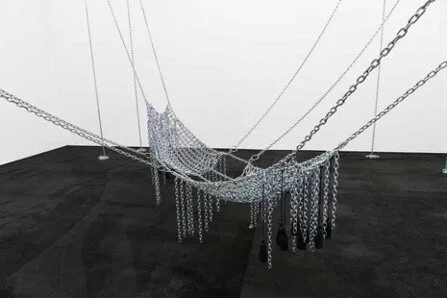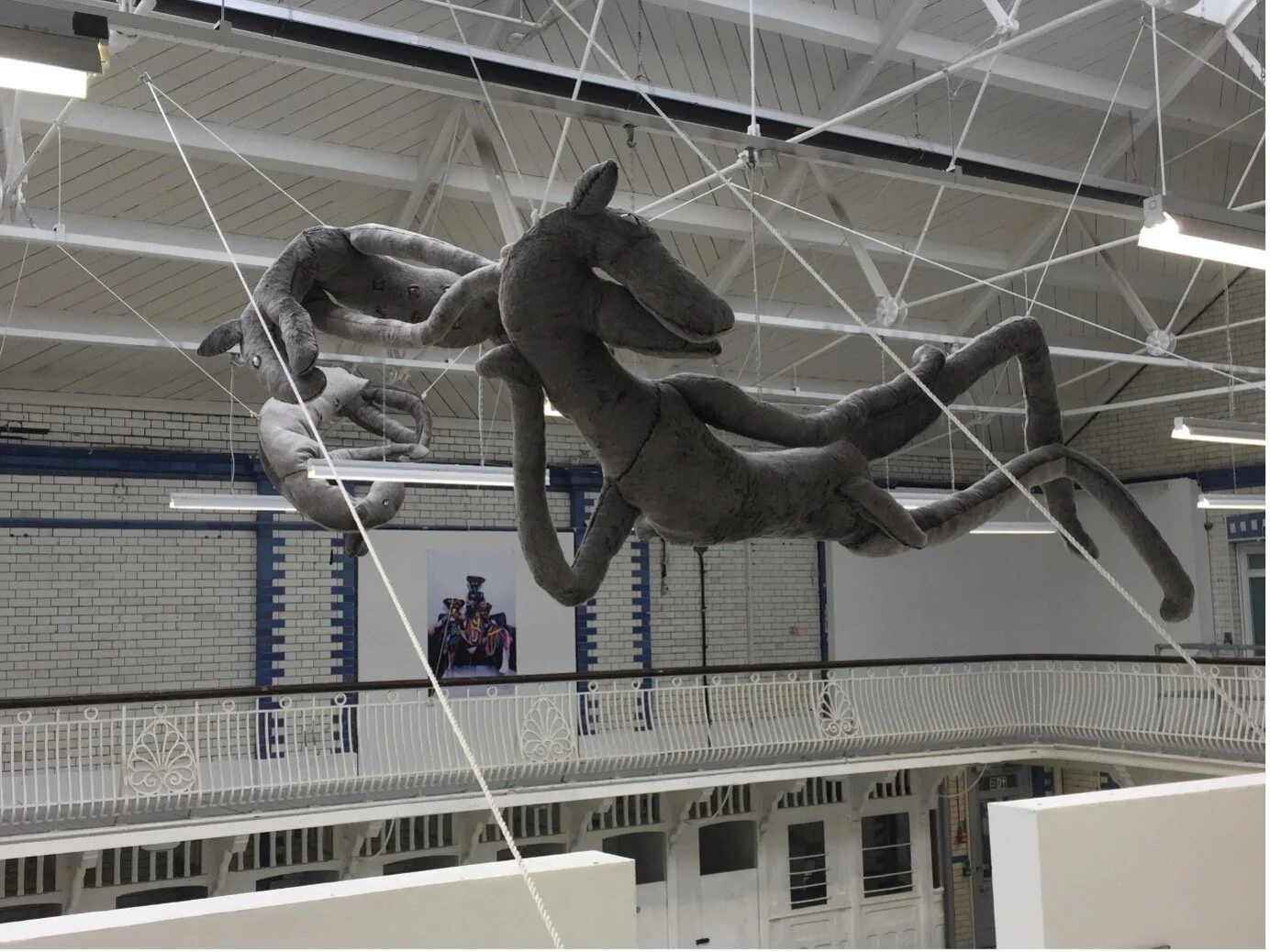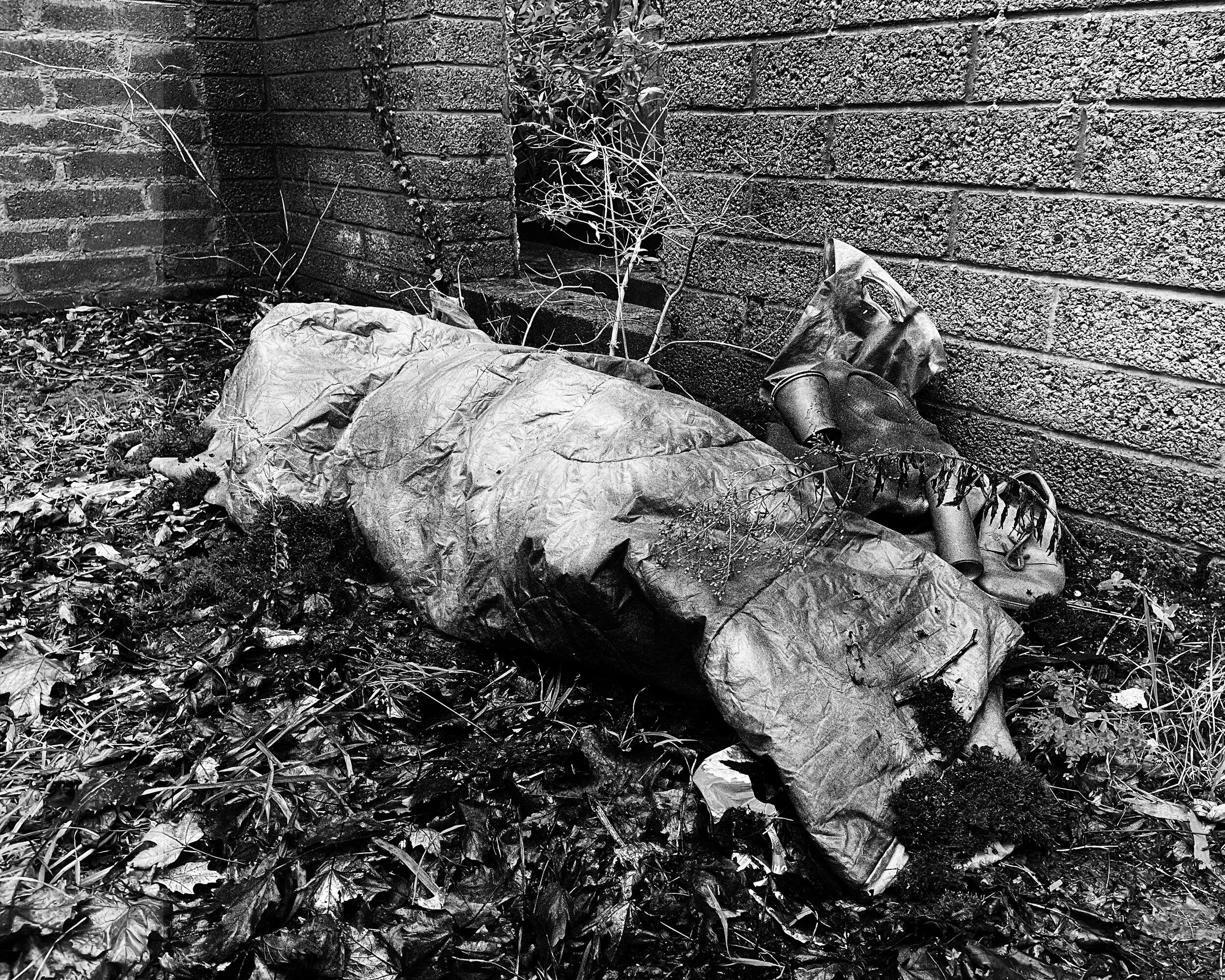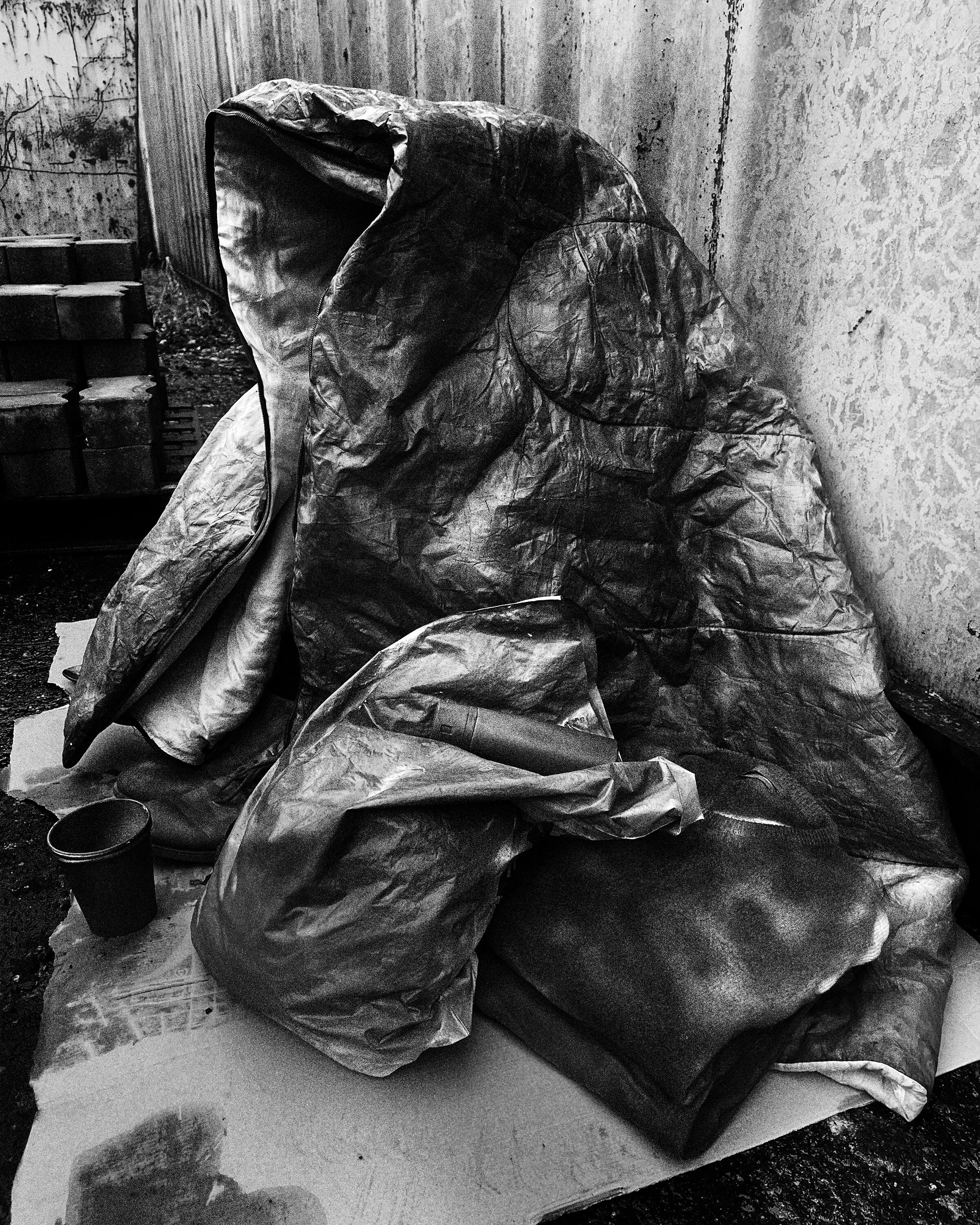The word “uncanny” has been used throughout history to describe a certain unsettling feeling one may feel upon encountering something. What may it refer to, both now and in the past? Since being coined somewhere around the late 16th century in Scots to mean “relating to the occult, malicious,” the word “uncanny” has taken up many meanings. In the early 20th century, Sigmund Freud wrote a piece of text (“The Uncanny”) that attempted to analyse what exactly constituted uncanniness.
In particular, his view is that a situation or encounter is uncanny due to an inherent familiarity of it — that one has encountered this situation before, albeit possibly under wildly different circumstances. The term 'uncanny valley' is also applied to artworks and animation or video games that reproduce places and people so closely that they create a similar eerie feeling. Artists, including some associated with the surrealist movement, drew on this description and made artworks that combined familiar things in unexpected ways to create uncanny feelings. We have had a lot of submissions for this theme, so we have picked a good range of work to publish this month we hope you enjoy it…
↓↓↓↓↓↓↓↓↓↓↓↓↓↓
Resident Writer Michaela Hall
The Empty and Uncanny Space
If there is truly a space that can feel uncanny, strange, mysterious, and eery to nearly all of us in the same way, it is those places that are meant to be full, used for a purpose, to bring people together that are suddenly starkly empty. This space lingers between the familiar and the unknown and the unexpected silence or uninhabited status of a space we did not expect can be very unsettling. This feeling lends itself to the idea of installation art and designed spaces and the uncanny is provoked in the work of both Monica Bonvicini and Lindsay Seers.
Italian internationally renowned artist Monica Bonvicini focuses on these ideas associated with architecture, space, power, and the viewer’s relationship to a place across her work. In her 2016-2017 exhibition at the BALTIC Centre for Contemporary Art ‘Her Hand Around the room’ a whole floor was dedicated to artworks from Bonvicini’s career that explored ideas of sexuality and architecture. The configuration of the floor plan was even modeled on the layouts of Berlin Sex clubs that Bonvicini had experienced in the past, those spaces designed to bring people together in an intimate way. However, the cold and empty feel of the vast spaces filled with leather, chains, and uninviting objects could not be more distant from their inspiration. In one of the first rooms in the exhibition sat the sculptural installation piece ‘Chain Leather Swing’ (2009). In its clinically white and clean room, which viewers were not allowed to enter, the chain swing provokes a feeling of estrangement and eeriness in what has, or could have been. Similarly, in another part of the exhibition ‘Harness’ (2006), a black leather harness swung unoccupied in the air, adding to this eery and uncanny feeling in the atmosphere.
Simultaneously, British artist Lindsay Seers concentrates on different spaces and their history in relation to their current state and relationship to the viewer in her work. In her 2017 exhibition, ‘Mental Matter²’ Seers created an installation comprising of video and performative elements in the Andaz Hotel which is formerly known as the Great Eastern Hotel in London. Consciously placed in the masonic temple where masonic meetings still take place in the present, a place for people coming together, Seers chose to focus on the history of the ritualistic site which is over a hundred years old. Doing so with a focus on the persona of Aleister Crowley, who was a British occultist, magician, and artist who heavily criticised the purpose and value of freemasonry and the very meetings that still take place in this setting. Through video, installation, sculpture, and unexpected performances Seers channels the persona of Crowley in the space, creating an unnerving, eery and mysterious experience of the space which would usually be predictably used. This combination of the past and present and the nod to the usually unrecognised space creates a feeling of uncanny for the viewer.
Indeed, what both Bonvicini and Seers achieve in these works is the ability to take a familiar space and transform it into something unknown and questionable, acknowledging the potential histories or possibilities of an environment. These empty spaces force the viewer to float in a state of uncomfortable equilibrium and explore the unexpected and the feared. These are unforgettable spaces that ironically, are so starkly empty yet full in their presence of the uncanny.
*********************
Prose by Lucy Lilley
The mankiest shirt I ever did see
A hand me down
A forget me not
A throw away piece
Laying down there
Like a murder victim.
The creepiest piece of rubbish I ever did see.
What fleshy boned creature did once fill your fibres?
A passionate fling
In a moment of abandonment
You black jersey deformed rag
Oh once were you a gloriously oversized sweaty sweatshirt
Now thrown off your fleshy recipient as they hurl themselves onto their lover inside a Skoda or a Rover or anything metal with wheels
You manky shirt, sentenced to death
They then mindlessly reversed over you with their
dirty
muddy
sludgy wheels of neglect
Oh you were never loved
You were just worn to keep one warm
And now you're flacid and splayed out on the sidewalk
Soaking up the drain water
Looked upon with disdain
You creepy
Manky
Shirt I ever did see
The further I walked, moments before you could become a black hole that would suck some other suckers mind into a dark and lonely place, I had thought about saving you, gagging a little as I´d picked you up with a hand encased in a placky bag from Aldi.
You'd look like a turd knotted up and taken home in a responsible fashion.
I´d sling you in the washing machine and you'd come out resurrected and redefined as
The most beautiful and stylish shirt you ever did see
Noone would know but me.
I'd lie and say i'd bought you, erase your sad beginnings or maybe even better I'd be a hero,
I´d be the only one who could love you like you had never been before
But I couldn´t, I just couldn´t!
What if you were a cloth from a murderous fool or evidence of a most hideous crime and your insidious web would entrap me and I'd become possessed?
The police would come knocking and my DNA would have already mutated into yours and that of the real criminal owner and I´d weep away my days in a cell and mutter over and over to myself..
“Damn you,, you manky piece of shit i ever did see, i wish i had never tried to save you.
You've destroyed my life!”
Abruptly interrupted in my moment of madness, I hear my sister call..
“Hey, slow down! Have you seen my jumper? It was tied around my waist whilst running and I can't find it anywhere.”
© 2021 Lucy Jane Lilley
Bio
Hi, I´m the author and illustrator of Alice in the Jungle and other stories published on my blog www.lilleythroughthelookingglass.com. I have a rich and diverse background in fashion, textiles, and art and most recently turned my attention to writing and illustration. My artwork and stories in the main are biographical but draw inspiration from children's fantasy stories and fables, magic realism, folk art, and nomadic women travel adventurers.
Here you can read Lucy’s book Alice in the Jungle and other stories…
Instagram: https://www.instagram.com/lilleythroughthelookingglass/
Facebook: https://www.facebook.com/groups/lilleythroughthelookingglass
Website/blog: www.lilleythroughthelookingglass.com
*********************
artist Heidi Pearce
BIO
Heidi really loves soft sculpture and puppets, whilst having an intense obsession with the absence of humans and often replaces them with ‘Dogs’ (or vague animal-like forms that could be dogs).
She dabbles in plush and kitsch which allows for exaggerated gestures and unnatural positions to have a confident existence, much to some audience’s confusion.
Whilst feeding off the sugary nectar of uncanny theory, Heidi felt that there was room for inspection in the necessity of uncanny elements which is where the ‘Lights on’ uncanny theory was born.
Maybe a slight rejigs of what counts as Uncanny, especially within aesthetic, could allow for a modern audience to once again have that raw, uncomfortable realisation that something is very wrong with that ‘Dog’.
website: https://pieceofpearce.netlify.app/about.html
Instagram: piece_of_heidi
The ‘Lights on’ Uncanny –
by Heidi Pearce
‘The ‘Lights on’ Uncanny’ is a notion that attempts to update the concept of the Uncanny’s aesthetic expression within the context of contemporary art. The concept allows for conventional aesthetic methods of achieving the Uncanny to be adapted for a contemporary audience, by creating an updated means of achieving the same eerie effect that is expected from Uncanny artworks.
The terror generated by the Uncanny is unlike that which is felt in response to gore and horror since horror simulates the fear of bodily harm and death. Fear of the Uncanny is more of a seeping realisation of Otherness. There has been much research into the primordial human being and our simple subconscious responses to threats, yet, the Uncanny is not an immediate threat. It is a creeping feeling of discomfort caused by an object, person or situation being threatening through its lack of recognition.
But why does the Uncanny need to be updated? My obsession with Uncanny Theory began with artists like Mike Kelley, Jentsch, and Jan Svankmajer, artists and theorists who either broke new ground or pushed at the edges of what it means to be Uncanny. Over time an almost endless number of visual artists have jumped in and around uncanniness, this has bred certain predictability especially within the aesthetic, for example, the use of automata and mysterious porcelain dolls in order to invoke a ‘creepy’ feeling. The use of lazy go-to’s such as the creepy doll highlights that the Uncanny, especially within contemporary art, risks stagnation due to outdated models of Uncanny theory that are being regurgitated to such an extent that it is difficult for audiences to still experience the classic sense of unease/surprise/otherness.
The Uncanny is such a primordial instinct that although its very definition is the unrecognisable/unheimlich/otherness, now we’ve had time to prepare to how certain objects and situations make us uneasy it is starting to be recognisable/Heimlich/known.
This is where ‘Lights on Uncanny’ started to form. ‘Lights on’ is my attempt at a facelift to Uncanny theory - a proposal is birthed from personal qualms that the uncanny’s general aesthetic has become somewhat formulaic. The notion aims to look at changes that are ultimately superficial and not detrimental to the conceptual value of the Uncanny allowing for contemporary art to ‘take back’ Uncanny theory, with more freedom in navigation.
Essentially ‘Lights on’ categorises the Uncanny into three distinct areas:
- Ambiguity
- Familiarity
- Darkness
Once the categories were determined, I was able to assess how important each was and if they were still actually needed to give that Uncanny feeling.
Ambiguity is the most important category as it is completely embedded in the Uncanny through its essence of distorting and vagueness.
Familiarity gives us the crucial point of reference and allows us to have something to hold on to as known so that anything not quite right will be glaringly obvious.
Darkness, when it really came down to it was the factor that contributed the least, especially within aesthetic. Physical, literal darkness simply feeds of fears of not being able to view things clearly with shadows and ‘void’ areas giving potential for anything to be lurking, which is not a specific enough threat for a modern audience.
‘Lights on’ is a very crude title that quite literally turns on the lights onto the Uncanny – exposing its dark corners and creating space for ambiguities and familiarities to be fully inspected. Lights on’ gives way for both the mundane and every day to be presented normally and without much suspicion - it allows time for us to sit with the art and to not suss out uncanny intentions as quickly. We have to work to notice that elements of our known situations/objects are very much being fucked with. Therefore, the uncanny potency, when we do eventually notice, is strong and gives us those sweaty palms.
The key components of the Lights on theory and the specific relationships needed between themes to allow for ‘Lights on’ efficiency are as follows:
- ‘Lights on’ can move within the potential for the Uncanny
- Potential for uncanniness can be just as unnerving as the Uncanny happening itself
- Ambiguity is the component with the most weighting
- Ambiguity exploits Familiarity in the ‘Lights on’ image
- Pre-existing associations of uncanniness cannot be lost but can be abstracted
- Familiarity presents risks of being too recognisable
- Darkness can be expelled from ‘Lights on’
- Darkness needs Familiarity to cushion its ‘easy’ aesthetic method
- ‘Lights on’ relies on unattended areas within the existing Uncanny theory
- Saturation and animals are an aesthetic aid to the ‘Lights on’ theory
Within my own artworks, I apply elements of the ‘Lights on’ theory. In ‘Dogs’ of the Sky -2019, I was able to demonstrate ambiguities and familiarities relationship with slightly recognisable animal elements of my forms, like pointy ears and six nipples, to allow for that period of time where the audience is figuring out what they may be looking at. Then it’s clear that there is no defined species of these incredibly large, looming soft sculptures in provocative/distorted poses. The Uncanniness lays in both the unnatural existence of the ‘dogs’ (dogs?) and their unapologetic presence with them quite confidently displaying their familiar qualities which of course makes us notice how much is off/wrong.
To summarise Lights On tries to find a way of creating that Uncanny feeling without relying on cliche aesthetics such as dolls, darkness, and half-formed faces. This (quite basic and maybe half-baked) notion allows for new conversations to be had around Uncanny theory as it is incredibly easy to get lost in the mountains of previous Uncanny dabbling’s. There are loopholes that I am happy to explore and it really gives space for introducing themes like saturated colours, replacement of human/humanoids with animals, and can also navigate within the kitsch. My main hope for this theory that I have created more choice and ‘build-your-own in this version of Uncanny. ‘Lights on’ is very much in on both the joke and seriousness of embedded fear. Not a reinvention but more a permission to explore intricate relationships of themes.
********************
Recipe for Disruption
Serve with empathy or “a right telling off”
By, Jenna Fox
This is s Springtime recipe for the more culinary adept.
Ingredients
1 x large garden with uneven crazy paving at the end of a cul-de-sac
1 x garden swing and rose bushes
A smattering of garden obstacles
1 x small boy wearing long trousers
1 x chain-smoking elderly neighbour
2 x blankets
1 x tub of Hydrophilic polymer and potassium ferrate (commonly known as wound powder)
1 x first aid kit
2 x cups of sweet tea
1 x injection of Lignocaine
1 x Telling off (various alternatives are available)
Utensils
1 x small bike
Roll of black thread
Curved needle
Selection of bandages
Timings
Preparation - Ten minutes to warm up child by vigorously cycling up and down the road
10 seconds for the accident
2 hours resting at the neighbours
3 hours sitting time at the hospital
10 days recovery
14 days after making stitch removal
Forever, the scars
Forever, a story to tell
Method
STEP 1 - Heat the child vigorously by cycling around the cul-de-sac until a rosy pink colour. Add a dash of adrenalin and fearlessness. Cycle fast through the gate and bounce over the step. Use corrective leg motions and brakes as required. Tip in foolhardy speed. Add a sprinkle of random garden objects.
STEP 2 - Hit the uneven paving at speed. Separate the child from the bike. Add pain and ripped jeans. Add copious amounts of blood. Dust with tears and fear.
STEP 3 – Raise the child to mix with the chain-smoking, old next-door neighbour. Place on a chair and inspect the bake. Add copious amounts of wound powder. Add two cups of sweet tea and a blanket. Wait for two hours until set then transfer to hospital.
STEP 4 – At the hospital inspect and inject with pain relief. Remove unattached skin, Sew the parts together. Bandage and serve.
Serve with
Tenderness and be careful with the bake for the next 10 days as the bake may be fragile.
Notes
This recipe cannot be pre-baked and has to be made on the day.
Bio
Jenna is a Second-year Fine art Masters's Student at RCA London, her work Explores trauma, women and family connections, control, and the domestic are central to the work that the multidisciplinary artist Jenna Fox makes. This is in relation to universal debates on feminism, home, gender, and identity. Expectations of the role of women and the pressures of juggling and keeping life and soul together are ongoing themes in Fox’s work. The burden has fallen back to women seeing an increase in domestic violence and 40,000 additional calls to the Domestic Abuse hotline - and all the while women are taking the brunt of homeschooling, working, feeding the dog, and looking like a goddess. In this unique solo show, Jenna Fox presents sculptures, installations, and drawings as manifestations of these debates. Often kitsch, tongue in cheek, and playful, the work sticks its tongue out at life’s hardships as a coping mechanism. This confessional and candid show seeks to expose issues that are often kept silent and show our vulnerabilities are our strengths as well as explore the ways in drawing can be expanded within its field.
contact Jenna Fox
https://www.instagram.com/jennafoxartist
https://jennafoxartist.weebly.com/
*********************
Artist - Anthony Carey
Bio - Anthony is a practicing artist and design instructor from Dublin, Ireland. He is currently studying Creative Arts with the Open College of Arts in the UK. Carey's work, intuitive and expressive by nature, is fuelled by an emotional connection to people, time, and place. Carey has published several books related to his art along with books that show his connection to his hometown through his Irish humour. He has taken part in group exhibitions in galleries and book fairs in Dublin and the UK.
Selected group shows include Art & Architecture: Uncovering Libraries & Collections, Temple Bar Gallery + Studios, Dublin, Ireland 2018, 2019, 2020.
Showcase, Gallery@OXO London, 2018
Sculpture in Context, National Botanical Gardens, Dublin, Ireland,2019
2020 Door to Door, Artaviso, (virtual) culminating in a physical exhibition in Litehaus Galerie, Berlin, Germany.
Current practice text - An investigation of narrative based on objects representing a person led me to create a large brown-paper overcoat. Placement of the coat outdoors changed the associations quite drastically and led to my current line of inquiry.
Over the years working with the Icon Factory in Dublin's Temple Bar, I have seen a sizable increase in the number of cardboard boxes and sleeping bags in doorways. The objects themselves paint the picture of homelessness.
Given that people place human qualities on inanimate objects or intangible concepts set the tone for my current practice of using ready-made and found objects. In March 2021, I produced an experimental film called 'Story'. The main players are a cardboard box, a hand covered in brown paper, and a paper overcoat. I relyed on people’s familiarity with particular objects and concepts to garner empathy and give the viewer pause for thought. Throughout its 60 seconds, we repeatedly see the paper coat, a gnarled outstretched paper hand reaching toward bright reflective yellow, perhaps a high vis-vest. The introduction of street noises, heavy rain, and the paper visuals lead us not to think of the objects themselves but of the person outdoors and vulnerable, seeking help.
Further explorations of this theme led to installation and 3D work where everyday objects are imbued with human qualities. A sleeping bag and shoes placed on cardboard in the right setting represent a homeless person. A head bound with standard string placed inside a glass case can conjure up so many associations based on an observer’s life experiences. We are brought to feelings; vulnerable, damaged, powerless, and exposed or perhaps visible but in a safe space. Using the objects became far more potent as an image of human qualities than the reality, which we are over sensitised to.
Contact email
asachrann@me.com
Website
‘You I Am’ video: 26 seconds - https://vimeo.com/537716978. ‘Story’ trailer: 12 seconds - https://vimeo.com/530236039 https://vimeo.com/528008703
*********************
POEMS OF THE UNCANNY
by - Bianca Hendicott
Valentine flower
The Orchid stands in her vase
Broken by sunlight and growling
At me with a protracted,
Wet tongue and a regal
Green stem leaning
To one side.
Her white petticoat, splattered
With running red droplets
Has opened,
No longer concealing a
Blushing crimson centre
Which now winks
Provocatively at the
Passerby like a harlot tease.
And I marvel how you
Knew not to send
Me a rose.
Strawberry butchery
A keen kitchen knife – death poised
Winks a scarlet silver slither mouth
Cold, cold, red.
And the cut carcasses lie still without
Their fresh green beheaded frill
Deeply, deeply red and dead.
Soft, wet flesh falls blushing past a thick thumb,
Then latches onto an obstinate bread crumb
Cold, cold, red.
Held up like an alert nipple it sins solid,
Skinned in soft stubble hair pins
½ a portion of flesh
A ruby juicy glaze forms over the tiles
A diluted blood canvas smiles moving
Cold, cold, red
Displayed on a porcelain platter - plump pink
Hearts move in handfuls from the sink
Deeply, deeply red and dead.
A summer feast of fruit buffet –
Touched by a crimson and coral heart display.
Meat.
Cold, cold, red.
Deeply, deeply red and dead.
Bio
Bianca Hendicott is a multidisciplinary artist whose early work has centered on the ephemeral nature of light in physics and photosynthesis, along with a fascination for the botanical reproductive system and cultural mapping. It consists of prints, film, poetry, sculpture, and various other multi-media works. Using flowers as symbols for colonial cultivation she explores the tense and dynamic colonial and post-colonial relationships that exist in her own heritage. Having grown up in South Africa and moving to the United Kingdom, she explores the ideas of diaspora and the importance of embracing layers of cultural identity through the national and colonial symbolism of flowers and traditional crafts. Her more recent work explores cultural heritage and autobiography through textiles and illustrated poetry. Key themes in her recent work address issues such as race, culture, feminism, domestic abuse, relationships, the home, and motherhood. She is interested in language – both visual/symbolic, written, and oral. There is an overarching focus on colour and form in all her pieces which express dreamlike landscapes and even terrifying nightmares.
contact - www.biancahendicott.com
The spaces between
We probably need them...
The pauses between words
The ellipses in thoughts
The crass caesura in a world of
run on lines
The gap between a title and it's
extended metaphor
The empty parking spaces
The passageways and corridors
Like a synapse to the dendrite
They're the centre of a whirlwind
The heavens before it rains
The lightening before the thunder or
An opened briefcase
It’s the empty oven
The nobody’s home
The space between
The matrix of a bone
The sigh
The yawn
The midday nap
The i before its dot
The blanks left on a
Crossword
The spill before its spot
The fingers moving between keys
The bullet before its shot.
For these are all but bridges
Like oceans and like seas
That join the ever solid -
Land of epiphanies
Yes
These are the spaces between matter or
What matters








